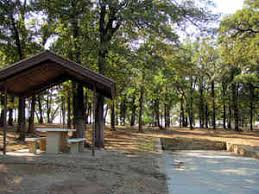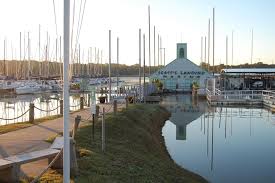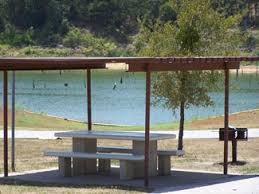For “Travel Tuesday”: Let’s visit Flower Mound, TX.
Question: “Which place in Texas has the least amount of violent crimes committed?”
Answer: “Flower Mound town is the place in Texas with the least amount of violent crimes committed. In 2005 there were 49 violent crimes committed for every 100,000 residents.”
 “It is in the Texas Prairies and Lakes Region which offers a wide variety of destinations & attractions, from the fast-paced cosmopolitan excitement of the Dallas/Fort Worth Metroplex with the best in shopping, dining & entertainment, to the beautiful lakes & laid-back country lifestyles found throughout the region. Discover the Excitement of the Texas Prairies & Lakes.”
“It is in the Texas Prairies and Lakes Region which offers a wide variety of destinations & attractions, from the fast-paced cosmopolitan excitement of the Dallas/Fort Worth Metroplex with the best in shopping, dining & entertainment, to the beautiful lakes & laid-back country lifestyles found throughout the region. Discover the Excitement of the Texas Prairies & Lakes.”
“ Flower Mound is an incorporated town in Denton and Tarrant counties in the U.S. state of Texas and a suburb of the Dallas–Fort Worth metroplex. Located northwest of Dallas and northeast of Fort Worth adjacent to Grapevine Lake, the town derives its name from a prominent 12.5-acre mound located in the southern portion of the town.
![images[5] images[5]](https://blogger.googleusercontent.com/img/b/R29vZ2xl/AVvXsEjImkLoSXccmx9lvDf_fv8-bpaiJ-3aXCpxv1Si9PhJ21fiFDw43LBA4rAksuxbvtmBbgFfmG_FYfVDBY5fiM4pfRTFpVwAMCPCJpNy1B4bZJyx7ijhg_sF3-cuyMM3mkyIMzb3hRZ1omGn/?imgmax=800)
Flower Mound is a residential suburban community of 20,000 acres on the shore of Grapevine Lake. It was established soon after Sam Houston settled a tribal dispute in 1844 and Indian raids in the area ceased. Permanent settlers moved in, attracted by the quality of the soil, which was suitable for raising cotton, corn, and wheat. The Peters colony named the town for a fifty-foot-high mound covered with Indian paintbrush; the mound was once used by Indians as a holy place. Unlike many pioneer settlements in Denton County that were bypassed by the railroads in the late nineteenth century or unable to survive the Great Depression, Flower Mound maintained a steady population throughout the first four decades of the twentieth century and became a substantial farming and cattle-raising community.
![images[1] images[1]](https://blogger.googleusercontent.com/img/b/R29vZ2xl/AVvXsEjZIYksfL-Siih6LyLb6dpZ5yn5znasg8waL_LLVCKICbqPSmA0XFv_LA-RToqU1JCFdBJMBUpX5v9WGNhY8hb8midLTUHsoDKNNQqpN6l8j9sFVpPREvuMae7WudevcDqcKcAFzFE4FZFW/?imgmax=800)
-------
Trails of Flower Mound
 The Purple Coneflower Trail
The Purple Coneflower Trail
“Flower Mound maintains more than 680 acres of parkland. This includes approximately 32.6 miles of multipurpose trails that link together parks, neighborhoods, schools, and businesses and two miles of equestrian trails. There are nine miles of equestrian trails and 14 miles of unpaved hike and bike trails for public use within the U.S. Army Corps of Engineers park property along the northern shores of Grapevine Lake. Many of Flower Mound's neighborhood parks offer a variety of playgrounds, covered picnic shelters, cooking grills, park benches, and basketball play pads. Residents also enjoy numerous youth and adult baseball, softball, football, and soccer fields, and public tennis courts.
This Tour was developed in cooperation with the Town of Flower Mound. The Purple Coneflower Trail is the first Guided Tour available on Everytrail.com. Current plans include guided tours for all the trails in Flower Mound and the U.S. Army Corps of Engineers park property along the northern shores of Grapevine Lake.

The John Thomas Wildflower Preserve is one of the largest areas for wildflowers in the Town of Flower Mound. It is second only to the Flower Mound. It was named after former Parks, Arts, and Library Services Board member John Thomas who was an advocate for the expansion and improvement of the parks and trails system in Flower Mound.
It is home to many different wildflower species throughout the growing season. This is a great place to view butterflies, bees, birds, and other wildlife. Bring your camera!”
Stone Creek Park
 In this area of Stone Creek Park there are numerous water features to observe just a short distance off of the trail, you may also notice small fish or even the paw prints of a raccoon. This location also makes good riparian habitat for many of areas furrier residents.”
In this area of Stone Creek Park there are numerous water features to observe just a short distance off of the trail, you may also notice small fish or even the paw prints of a raccoon. This location also makes good riparian habitat for many of areas furrier residents.”
_____
Grapevine Lake
The lake's earthen dam
Lake and its parks
“If you enjoy walking the trails then please join the free all women's walking group at http://www.meetup.com/Flower-Mound-wa.... We're a sociable ladies walking group free of charge who meet at Flower Mound/Grapevine trails that walk in all types of weather and encourage you to bring your dogs.”
Parks and trails
Crosstimbers horse trail.
The north shore of Grapevine lake.
“Numerous parks surround the lake. Some of the parks are owned, leased or maintained by the local community. Others remain in the Corp of Engineer's control. The area contains 30 miles (50 km) of natural surface trails including nature, biking and equestrian trails.
Trails listed by the Corps of Engineers include the nine mile (14 km) Northshore trail, the three mile (5 km) Rocky Point trail, the five mile (8 km) Crosstimbers horse trail, and the four mile (6 km) Knob Hill trail.
Camping
The lake has primitive camping, prepared camping sites, and trailer / RV camping.
Murrell park currently has tent and primitive camping, but is undergoing an expansion to increase camping facilities.
Vineyards campground, managed by the city of Grapevine, offers site camping, RV parking, and cabins.
Fishing and hunting
The lake is home to a number of fish species, including largemouth bass, spotted bass, white bass, white crappie, and channel catfish. Fishing regulations of most species are managed under statewide regulations. The exception is a 14 to 18 inch (36 to 46 cm) slot limit on largemouth bass; only bass between 14 inches (36 cm) and 18 inches (46 cm) may be retained. Daily bag limit for all species of black bass is 5 in any combination. Murrell Park, a premier spot for catching sand and black bass on the north shore, was heavily damaged in the summer 2007 flood and was partially closed.
With a permit and in season, public hunting is allowed in the Trophy Club Park area (formerly Marshall Creek Park), located at the north-west end of the lake. Waterfowl and small game hunting, as well as bow hunting of feral hogs and deer is permitted. Hunting licenses are obtained from the state of Texas and an additional permit from the U.S. Army Corps of Engineers required.
On March 24, 2010, Kris Howe found four bones of a 96 million year old bird. Two Dallas scientists say that the bird is the oldest in America.
Marinas and boating
There are three marinas located on the lake, all operated by the private company Marinas International. On the south shore, in Grapevine, are Scott's Landing and Silver Lake.
On the north shore, in Flower Mound, is Twin Coves. The marinas support an active boating community on the lake; combined, the three marinas have approximately 1,400 moorings, with land-based storage for an additional 575 vessels.
Lake Grapevine is an 8,000 acre lake, great for all water-based activities like boating, water-skiing, wind surfing and fishing . You can also go camping and picnic on the shores.”

I hope you enjoyed touring the area of Flower Mound, TX
________
On This Day:
Divided Kansas enters the Union, Jan 29, 1861:
“The territory of Kansas is admitted into the Union as the 34th state, or the 28th state if the secession of eight Southern states over the previous six weeks is taken into account. Kansas, deeply divided over the issue of slavery, was granted statehood as a free state in a gesture of support for Kansas' militant anti-slavery forces, which had been in armed conflict with pro-slavery groups since Kansas became a territory in 1854.
Trouble in territorial Kansas began with the signing of the 1854 Kansas-Nebraska Act by President Franklin Pierce. The act stipulated that settlers in the newly created territories of Nebraska and Kansas would decide by popular vote whether their territory would be free or slave. In early 1855, Kansas' first election proved a violent affair, as more than 5,000 so-called Border Ruffians invaded the territory from western Missouri and forced the election of a pro-slavery legislature. To prevent further bloodshed, Andrew H. Reeder, appointed territorial governor by President Pierce, reluctantly approved the election. A few months later, the Kansas Free State forces were formed, armed by supporters in the North and featuring the leadership of militant abolitionist John Brown.
During the next four years, raids, skirmishes, and massacres continued in "Bleeding Kansas," as it became popularly known. The territory's admittance into the Union in January 1861 only increased tension, but just three and a half months later the irrepressible differences in Kansas were swallowed up by the full-scale outbreak of the American Civil War. During the Civil War, Kansas suffered the highest rate of fatal casualties of any Union state, largely because of its great internal divisions over the issue of slavery.”
______
Liliuokalani proclaimed queen of Hawaii, Jan 29, 1891:
“Following the death of her brother, King Kalakaua, Liliuokalani becomes the last monarch of the Hawaiian Islands.
Hawaii, first settled by Polynesian voyagers sometime in the eighth century, saw a massive influx of American settlers during the 19th century, most coming to exploit Hawaii's burgeoning sugar industry. In 1887, under pressure from U.S. investors and American sugar planters, King Kalakaua agreed to a new constitution that stripped him of much of his power. However, in 1891, Liliuokalani ascended to the throne and refused to recognize the constitution of 1887, replacing it instead with a constitution that restored the monarchy's traditional authority.
Two years later, a revolutionary "Committee of Safety," organized by Sanford B. Dole, a Hawaiian-born American, staged a coup against Queen Liliuokalani with the support of U.S. Minister John Stevens and a division of U.S. Marines. Stevens recognized Dole's new government on his own authority and proclaimed Hawaii a U.S. protectorate. Dole submitted a treaty of annexation to the U.S. Senate, but most Democrats opposed it, especially after it was revealed that most Hawaiians did not want annexation. President Grover Cleveland sent a new U.S. minister to Hawaii to restore Queen Liliuokalani to the throne under the 1887 constitution, but Dole refused to step aside and instead proclaimed the independent Republic of Hawaii, which was organized into a U.S. territory in 1900.
Liliuokalani herself spent much of the remainder of her life in the United States, where she unsuccessfully petitioned the federal government for compensation for seized property and other losses. The territorial legislature of Hawaii finally voted her an annual pension of $4,000 and permitted her to receive the income from a small sugar plantation. In additional to her political fame, Liliuokalani is also known for composing many Hawaiian songs, including the popular "Aloha Oe," which translates to "Farewell to Thee."
______
U.S. Baseball Hall of Fame elects first members, Jan 29, 1936:
“On January 29, 1936, the U.S. Baseball Hall of Fame elects its first members in Cooperstown, New York: Ty Cobb, Babe Ruth, Honus Wagner, Christy Matthewson and Walter Johnson.
The Hall of Fame actually had its beginnings in 1935, when plans were made to build a museum devoted to baseball and its 100-year history. A private organization based in Cooperstown called the Clark Foundation thought that establishing the Baseball Hall of Fame in their city would help to reinvigorate the area's Depression-ravaged economy by attracting tourists. To help sell the idea, the foundation advanced the idea that U.S. Civil War hero Abner Doubleday invented baseball in Cooperstown. The story proved to be phony, but baseball officials, eager to capitalize on the marketing and publicity potential of a museum to honor the game's greats, gave their support to the project anyway.
In preparation for the dedication of the Hall of Fame in 1939--thought by many to be the centennial of baseball--the Baseball Writers' Association of America chose the five greatest superstars of the game as the first class to be inducted: Ty Cobb was the most productive hitter in history; Babe Ruth was both an ace pitcher and the greatest home-run hitter to play the game; Honus Wagner was a versatile star shortstop and batting champion; Christy Matthewson had more wins than any pitcher in National League history; and Walter Johnson was considered one of the most powerful pitchers to ever have taken the mound.
Today, with approximately 350,000 visitors per year, the Hall of Fame continues to be the hub of all things baseball. It has elected 278 individuals, in all, including 225 players, 17 managers, 8 umpires and 28 executives and pioneers.”
_______
Yesterday:
Ray and I were scheduled to drop my van off at the mechanic on the way to the Orientation Class for the SPCA’s new cat habitat at Petco in Conroe. We had both volunteered to tend to the cats 2-3 mornings a month. Ray was still feeling dreadful after having his two abscessed teeth out, and begged off.
Claudia had already said that she would take me, and Jay, her son wanted to go too. I walked Misty around here, and even went a bit further than we usually walk.
We dropped off my van, and I was the only one at the orientation. Another SPCA mom had come into town especially to show me the ropes. First, I had to sign a bunch of release type forms, and I was given a folder of guidelines. Then we found out that even though the habitat already had some cats in it, the key wasn’t there yet. The morning shift is supposed to make sure they have clean boxes and water, then give them some canned food. Fortunately, the cats were in good shape and had dry food and water, so the afternoon shift had to give them their canned food.
Jay was very overbearing and Claudia had had enough of him. Even though she had a doctor’s appointment in a town south of Conroe, she brought us home, so she could go without him.
I had a big scare with my computer. I turned it on and a black screen said there was something wrong with my keyboard, so I replaced it. Still a black screen, but I could hear Windows music starting up. Tried another keyboard, same thing. Changed monitors, that worked, but it wanted me to do a Windows system restore. I set it for a few days earlier, but I had lost this whole post which had taken me nearly three hours to write.
I was so absolutely sick of computers, and was going to swear off them forever. Then I realized the business deals that I have going on, which shackles me to the blasted things.
Then I remembered that I have Windows Log File, and the draft of this post would be in there, so here is your post for today.














![images[8] images[8]](https://blogger.googleusercontent.com/img/b/R29vZ2xl/AVvXsEhsH_B2ATsWnQzyTB2iDbK3vXP_dCpZmkhK_z0holy623MY9RTKKNqSb5YwMqBpnL2nbw3kwBzcbKQbOFwMV0ZZJ4bvGZyZKCv7rnOldImTgKMhsv1kw4-8SL77t-CLgP2P0RP6i97o78xR/?imgmax=800)


















2 comments:
I used to live in Justin and have fished the western end of Grapevine Lake in our canoe. My oldest son (now deceased) caught two 8 pound bass withing a couple of minutes out of one brush pile. Nice lake and fossils everywhere.
Thanks for your comment, DD.
We used to go boondocking there, Lake Levon and Lake Lewisville, when I lived in the suburbs of Dallas.
Happy Tails and Trails, Penny.
Post a Comment